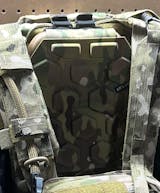National Tactical Medicine Competition 2018

The National Tactical Medicine Competition hosted by SOARescue is a world class event drawing competitors from a diverse range of backgrounds. For 2018 there were teams from throughout the United States, Canada, the Netherlands, and Australia (who won the competition their first year attending). They were faced with multiple complex stages and brutal heat and humidity. I’d like to highlight the effort of all the judges, staff, and operators, that worked non-stop all day making sure that each and every team had a successful and challenging experience.
For now here are some quick common themes for our readers to incorporate into their own training this Summer:
- Training scenarios are usually in the 5 to 10 minute range immediately followed by review: The competition represents multiple ongoing casualties over a ~45 minute period, and when coupled with the environmental challenges was a notable challenge for every team. Mixing in longer scenarios or working through multiple scenarios at a time is important and presents unique challenges. For example some teams don’t carry water on their person because they’re used to having bottled water in vehicles close-by. A constant supply would certainly have benefited some teams.
- In-flight medicine is usually the next care-provider’s responsibility: Most teams are used to loading a casualty onto a helicopter. Getting in and continuing treatment in the confined and noisy environment was a scenario most teams weren’t training on. This of course makes sense given that flight medicine usually requires specific training and certifications. However, one of the teams mentioned that it’s not unreasonable to imagine a military scenario where a helicopter is available but not a flight paramedic. Even just training to work in confined and noisy areas would’ve been beneficial.
- High angle rescue is specialty training: CTOMS provided an awesome high angle rescue kit that was used for the final scenario. Some teams lacked experience in high angle rescue due to their usual work environments or because rotary wing assets were assumed to be available. However, given the broad availability of training and equipment it might be worth going through training for this scenario, even if it’s simply as a way to change things up for a few sessions and bring fresh challenges.
- The canine casualty caught a couple of teams off-guard. It was interesting to see that most law enforcement teams were well prepared for canine medicine but military teams might have very limited experience. It was also surprising to hear that one team actually had a huge amount of difficulty finding and receiving any canine trauma medical training. If building a tactical medical curriculum this is definitely an area that shouldn’t be missed; it was clear that there’s a genuine passion for caring for every member of the team and canines are becoming an increasingly common sight.
We got post run interviews with most of the teams and listening to their thoughts on the event, their preparation, and challenges, was fascinating. Keep an eye out for content that we’ll be putting out over the next few weeks! For local news coverage of the event by WSOC-TV see the videos beneath the image!








Leave a comment